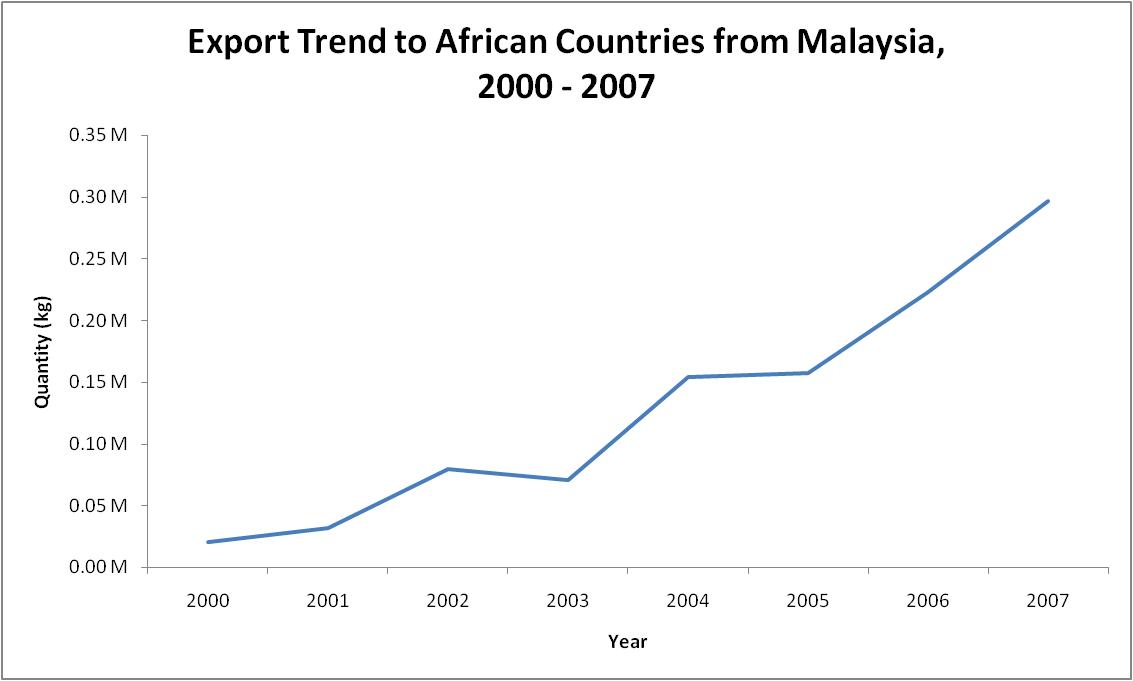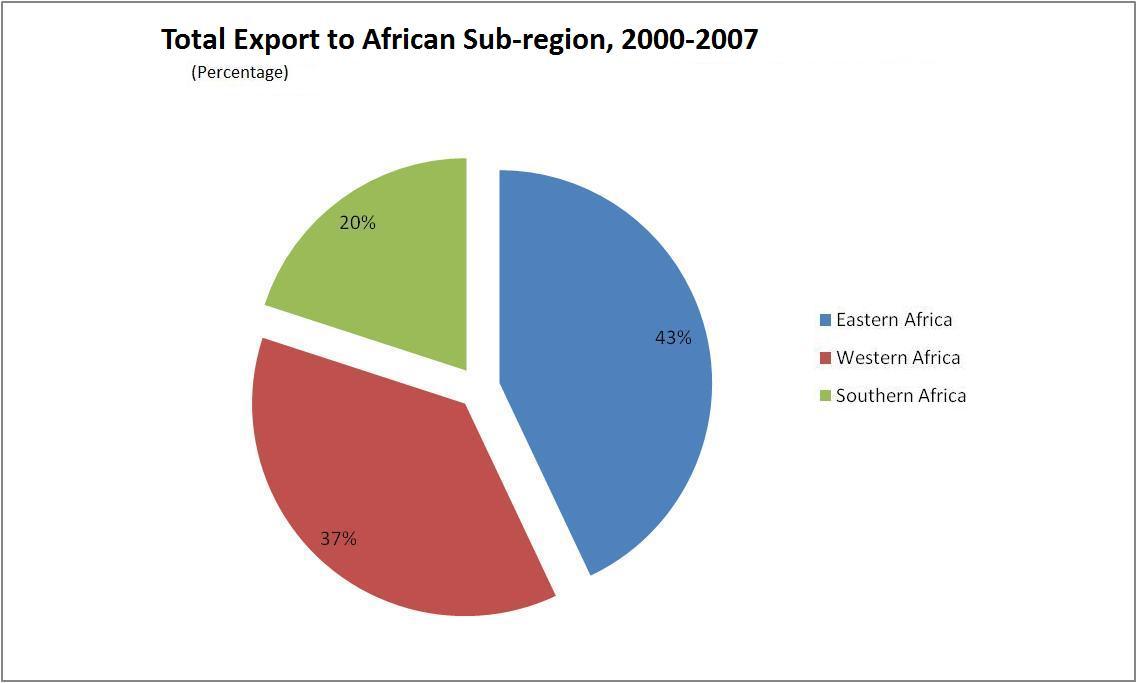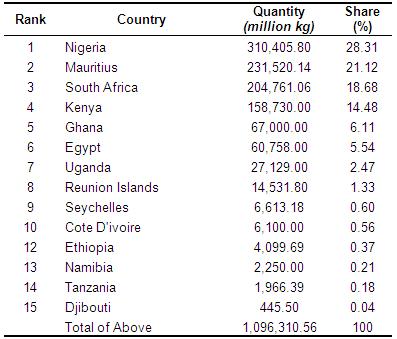6.1.3 African Region
Malaysia’s export trade to Africa indicated very significant increases throughout the observed period i.e., from years 2000 to 2007. The t quantity increases were from about 300 thousand kg to 3 million kg. The countries in this region which have trade relations with Malaysia are Nigeria, Mauritius, South Africa, Kenya, Ghana, Egypt, Uganda, Reunion Islands, Seychelles, Cote D’ivoire, Ethiopia, Namibia, Tanzania and Djibouti. For the purpose of this report, the region of Africa is divided into Eastern Africa, Western Africa and Southern Africa. Eastern Africa, imported the largest amount of raw materials from Malaysia, which was 43% of the total import from the region, followed by Western Africa with 37% and South Africa at 20%. See the following graph in Figure 232, pie-chart in Figure 233 and table in Table 179. Refer to Appendix 5 (Africa: Export of herbal raw material and aromatic plants 2000-2007 by country)
Export Trend

Export Share among the Africa Sub-Regions
As mentioned above, Eastern Africa was the bigges importer of the raw material at 43% of the total trade, followed by Western Africa at 37% and Southern Africa at 20% of Major products imported were other essential oils other than those of citrus fruits and mixtures of odoriferous substances used in the food or drink industry. Other raw materials like spices, other natural gums, resins, gum-resins and oleoresins and other spices were also exported into the region in small quantities.

Major Export Destinations to the African Sub-region
Nigeria imported about 28.3% of the raw materials from Malaysia, Mauritius at 21.1%, South Africa at 18.7% and Kenya at 14.5% from other countries imports were less 10% each. Nigeria mainly imported other essential oils other than those of citrus fruits and mixtures of odoriferous substances used in the food or drink industry. Mauritius imported mixtures of odoriferous substances used in the food or drink industry, other spices and some smaller amounts of concentrates of essential oils in fats or fixed oils in waxes and mixtures of odoriferous substances used in food or drink industry. Imports to South Africa consisted of smaller quantities of cloves, cinnamon and cinnamon tree flowers neither crushed nor ground and other natural gums, resins, gum-resins and oleoresins. Kenya imported small amounts of other essential oils other than those of citrus fruits and mixtures of odoriferous substances used in the food or drink industry (see table below). Insignificant amounts of other raw materials were imported by the other countries of the region.



